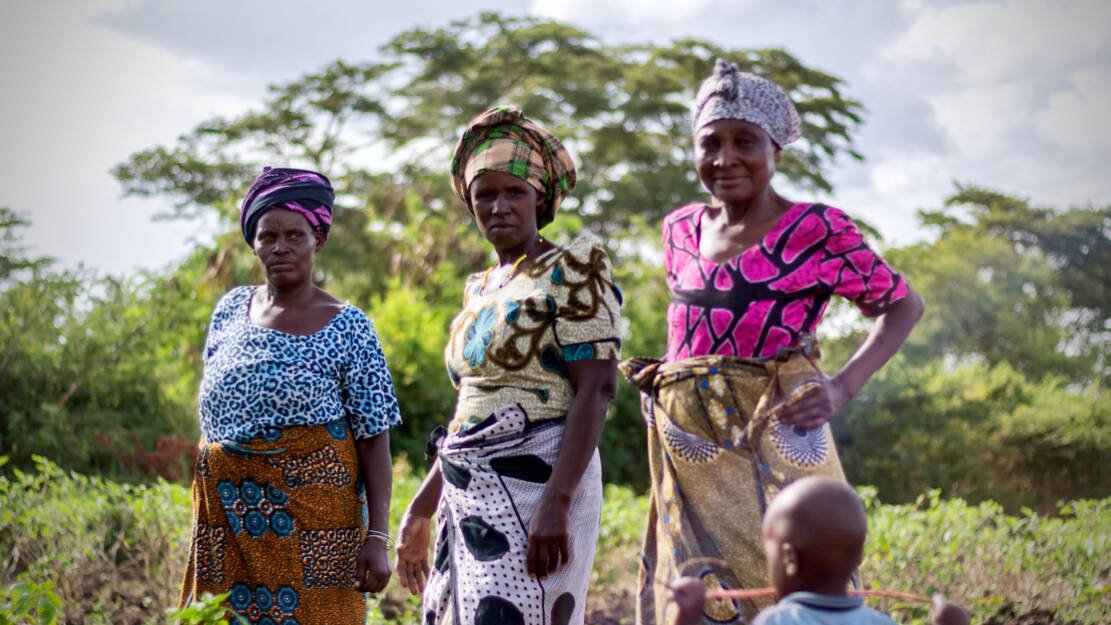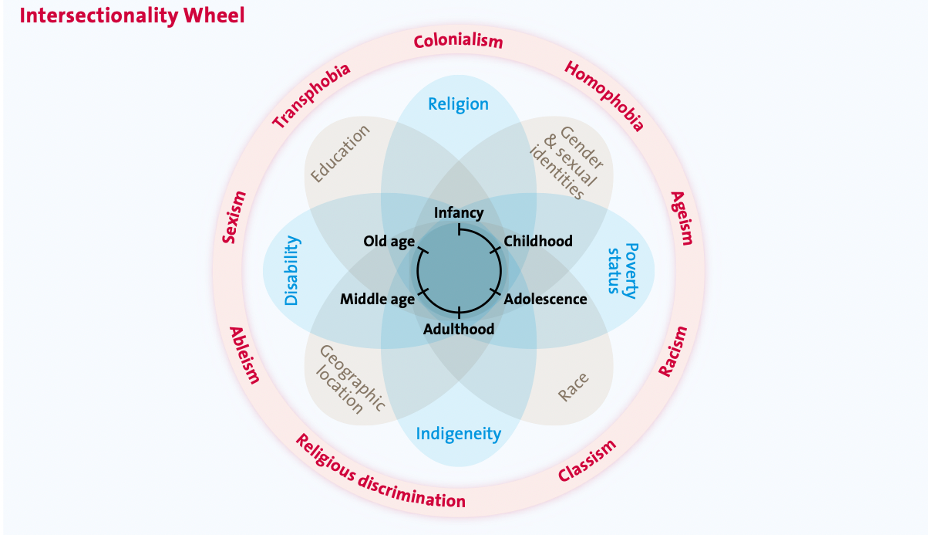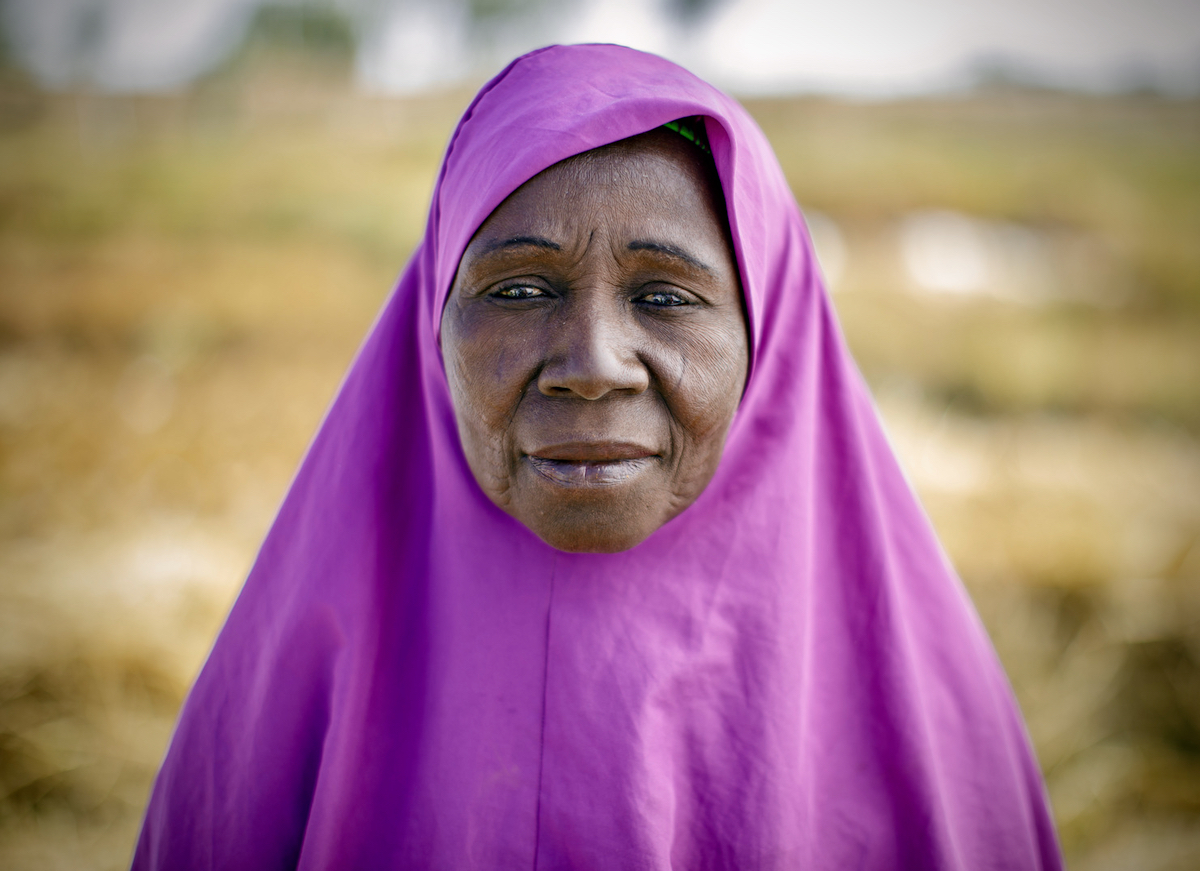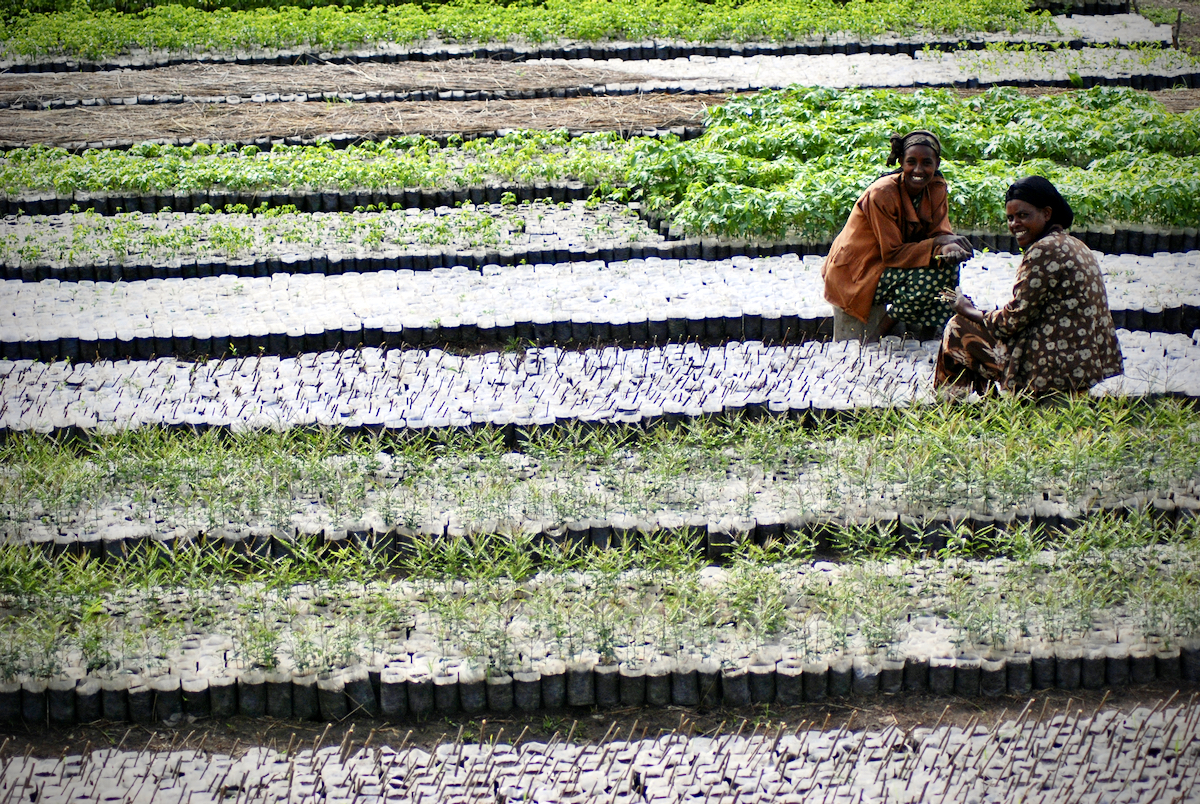Why Intersectionality Matters
Towards gender-responsive development in the transformation of agriculture and food systems

The Added Value of This Article
Hover over to have a look!Value add for readers
- The article advocates for integrating intersectional approaches in agricultural development, emphasizing their role in fostering gender equity and social inclusivity in food systems transformation.
- Addressing challenges of limited resources, the article underscores the need to make intersectionality actionable, exploring key questions on policy, program implementation, and project design. It aims to move beyond buzzwords, fostering a shared understanding and documenting best practices for practical application in the field.
© GIZ / Fabiana Anabel Woywod
“Integrating intersectional approaches in agricultural development programming can help foster more gender-equitable and socially inclusive food systems transformation.” — This was a key takeaway from GIZ’s GTA Lighthouse and Harbour talks on Intersectionality in Gender and Agricultural Research for Development that were given earlier this year by Katie Tavenner.
Originating nearly 40 years ago in black feminist thought, the concept of intersectionality has become established as an analytical lens and social theory to account for and better understand multiple and compounding identities and how they influence discrimination and privilege. It recognizes that people’s lives are shaped by their identities, relationships, and social factors.
Intersectionality engages with the complexities and diversity among women, men, and other gender groups—moving beyond the binary focus on the differences between women and men. Applied to food systems, using an intersectional lens can illuminate the double, or multidimensional vulnerability smallholders face, particularly in the context of a changing climate. This helps address fundamental gender equality and social inclusion questions such as:
How do factors such as sex, age, marital status, ethnic group, socioeconomic status, and others intersect, and influence the widespread adoption of agricultural innovations and development outcomes needed for transformative food systems?
Lighthouse and Harbour talks of the working group Gender-transformative Approaches held earlier this year explored the use of intersectionality in agricultural development. The goals of the talks were to introduce the concept of intersectionality, discuss the value addition of intersectionality to achieve food system transformation, and how to make intersectional approaches practical and actionable for development organizations.
Better understanding the concept of intersectionality
Interest in using intersectionality as a guiding principle for socially inclusive and gender-equitable development has grown substantially in the last five years. A recent scoping review on intersectionality in adaptation-relevant interventions from the Adaptation Fund found that development institutions are increasingly adopting the language of intersectionality in their programming. However, clarity around what exactly intersectionality covers in an applied development context is still lacking.
To capture the complexity of the concept, the Intersectionality Wheel as used by UN Women in Figure 1 is a helpful visual.

Figure 1: Source: UN Women. Intersectionality Resource Guide and Toolkit: An Intersectional Approach to Leave No One Behind. 2021. https://www.unwomen.org/en/digital-library/publications/2022/01/intersectionality-resource-guide-and-toolkit.
The three circles of the Intersectional Wheel each represent a different layer of interconnectivity. The innermost circle represents a person’s unique circumstances. The second circle from the inside represents aspects of identity. The third circle from the inside represents different types of discrimination, inequalities, and attitudes that impact identity.
Although intersectionality is a complex concept, it is incredibly useful to development programming. Intersectionality promotes more inclusive and gender-responsive policymaking. Intersectionality can inform and promote gender transformative development approaches by identifying different power structures (root cause of inequality) that need to be dismantled to ensure equity for all. For example, applying an intersectional approach would mean understanding how different social groups could be affected by a specific policy change or intervention. Thus, such an approach should be able to facilitate more inclusive decision-making and strategy development.
The value addition of an intersectional approach to food systems transformation

© GIZ / Thomas Imo/photothek.net
Intersectionality in the context of gender and food systems captures the ways that gender inequalities intersect with other forms of inequality and axes of social differentiation, (such as age, assets base, marital status, race/ethnic community, and caste/class). These dynamics are situated within specific historical and cultural contingent contexts influencing people’s ability to benefit from agricultural development. Such multiple intersections in turn define power relationships.
An intersectional perspective is relevant to agricultural development programming because it recognizes the heterogeneous nature of people facing multiple and intersecting forms of marginalization. In the case of women, it recognizes and addresses the role of diverse intersections and of power hierarchies, often a significant gap in development efforts. At the same time, even the use of general social categories such as “women and youth” can miss the point about the myriad and intersecting ways discrimination and inequality impact participation in food systems, leaving power issues sidelined. For example, in Tanzanian dairy production, marital status is a more important indicator of how social factors influence farmer’s ability to engage in food systems than sex differences alone, and understanding how sex, age, and marital status interact is critical for whether and how women and men can benefit from agricultural interventions.

© GIZ / Michael Tsegaye
Making intersectional approaches practical and actionable for organizations
If intersectionality is to be a useful concept in gender-responsive food system transformation, it must be an actionable concept capable of practical application. This is especially the case for researchers and project managers who have limited time and staff resources to engage in additional analyses beyond minimal requirements for sex-disaggregated data.
The Harbour talk focused on how an intersectional approach could be made more actionable for GIZ. The newly launched Feminist Development Policy of Germany’s Federal Ministry for Economic Cooperation and Development served as an anchor for discussion. Among the topics discussed, key questions included:
- How do we make feminist development policy a reality? (Spotlight Intersectionality)
1a What is needed? Do you see intersectionality as more than diversity and social inclusion? - What is intersectionality at the policy and programmatic level?
- What does it mean for limited time and resources?
- What will it mean for project design and M&E to think about addressing intersectionality?
4a. What are the types of questions we would need to ask to address that? - What is value addition? How to bring the concept beyond a buzzword.
5a. How do we lead the conversation? Are there potential roadblocks?
- What will it mean for M&E to think about addressing intersectionality? What types of questions would we need to ask to address that? While we appreciate and understand that intersectionality is individual, we can also approach intersectionality at a community, regional, and national level?
- How do we live this strategy as an organization? What does it mean in reality? Where might you see intersectional approaches?
- How can I implement intersectionality with limited resources/effort?
- What type of institutional capacity is necessary? What evidence is needed?
- Given that many people are at the mid- to end-stage of a project when considering a gender and social analysis, how could we interpret the project results using an intersectional lens? (e.g., using existing socio-economic data, surveys, etc.)
The talk also focused on the danger of intersectionality becoming a development buzzword, where practitioners are pressured to use the term, but it has no substance. A key solution to this is to have a shared understanding of intersectionality, which the talk aimed to foster among GIZ staff.
Moving forward, the SNRD working group on Gender Transformative Approaches aims to experiment with intersectional analyses and to document their best practices and lessons learned. Documentation of these ‘learning by doing’ strategies will help generate valuable knowledge and experience that can inform practical implementation/application best practices that can be taken forward into future interventions.
Contact
Reach out to the working group Gender Transformative Approaches at gta@giz.de
Laura Rondholz, laura-christine.rondholz@giz.de

